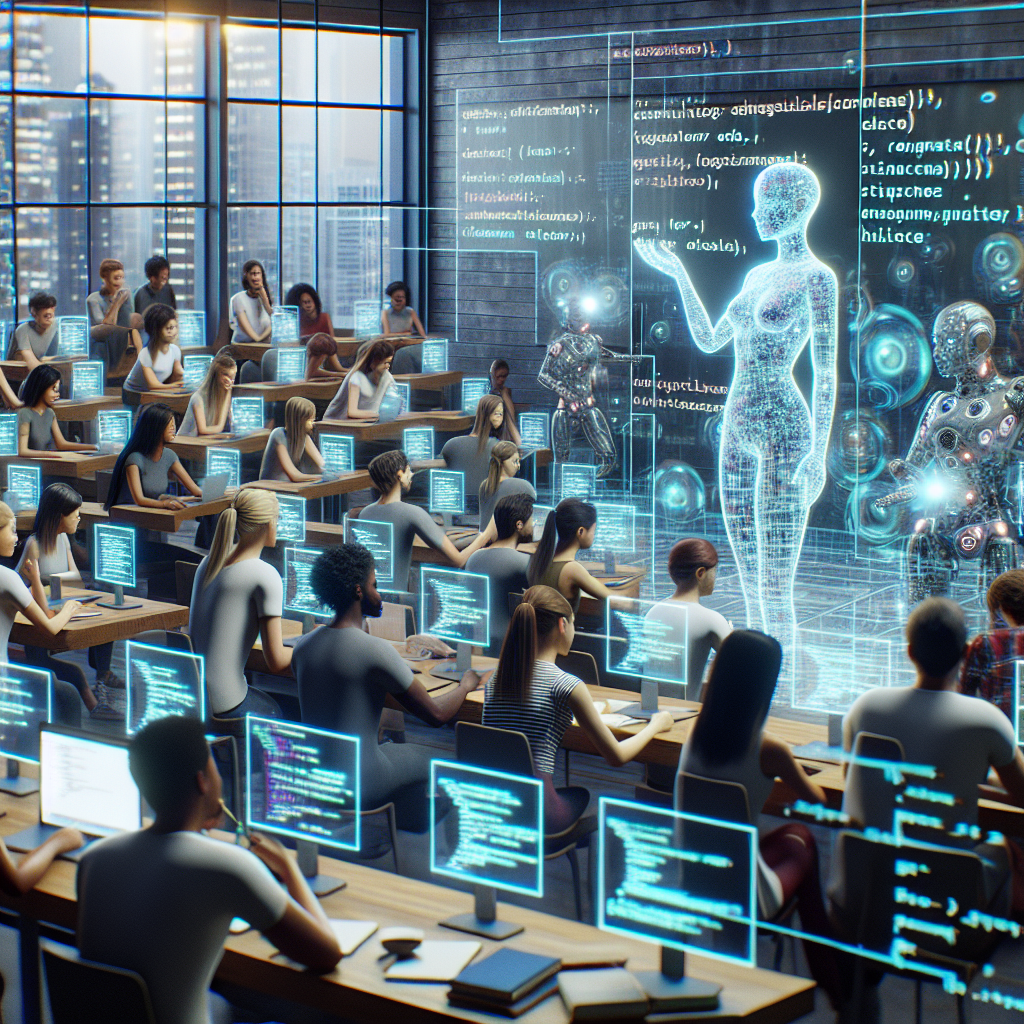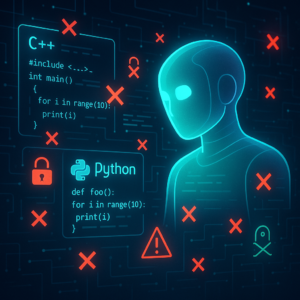Unveiling Student Tendencies: ChatGPT in Programming Education

Unveiling Student Tendencies: ChatGPT in Programming Education
Welcome to the tech-driven world, where artificial intelligence isn’t just the futuristic world depicted in sci-fi movies but a reality peeping into our everyday classrooms – particularly those teaching programming. With the rise of generative AI tools like ChatGPT, programming students are finding themselves at the crossroads of opportunity and challenge. Our focus today? Understanding how these tech tools are reshaping the landscape for students and educators alike.
The AI Ace up Students’ Sleeves – What’s Really Happening?
Imagine having a genie in a bottle for your toughest programming challenges. Generative AI tools like ChatGPT serve that very role but with a twist. They’re not mere wish-granters; they require careful usage to truly shine.
Christian Rahe and Walid Maalej conducted a groundbreaking study with 37 programming newcomers to map out this new frontier. Their primary mission? To understand how students actually interact with generative AI and the impact on their learning pathways. What they discovered offers insight into modern educational dynamics and the delicate balance between assistance and dependency.
When a Solution Isn’t Really a Solution
In the experiment, ChatGPT was accessible to all students tasked with understanding and improving specific code exercises. Interestingly, over half of the students didn’t even try interacting with the AI. But those who did went down two main pathways—seeking general knowledge or going straight for a full code generation solution. Often, what unfolded was an unfortunate loop: students were submitting incorrect AI-generated code, then repeatedly asking ChatGPT for corrections. It’s a bit like getting locked in a bizarre negotiation with the genie!
The results? Students weren’t leveraging AI tools to comprehend their mistakes or learn the underlying principles but were instead falling into a cycle of inefficacy.
The Conflicted Classroom: Educators’ Concerns and Approaches
Generative AI tools’ allure carries some justified educator concerns, mainly around diminished critical thinking and potential cheating. So, how should educators adapt? The research suggests two main strategies: fully embrace AI as a part of learning or banish it from educational spaces.
Each option carries notable challenges. Embracing AI requires integrating it effectively into the curriculum, transforming an instructor’s role into a guide who teaches discernment. On the flip side, restricting access might hinder technological fluency necessary in modern workplaces. The bottom line? We need more insights, like those gleaned in Rahe and Maalej’s study, to make educated choices.
AI: Ally or Adversary?
Our AI tools are still in their infancy; think of them as toddlers learning to walk. They’re prone to missteps (or logical errors, in this case) yet full of potential. The study highlighted that students using ChatGPT tended to engage less critically with their work compared to their counterparts who didn’t rely on it.
GPT models exhibit limitations, producing correct syntactic code nearly all the time but struggling with logical accuracy – a critical aspect to master in programming. Unlike a tutor’s intuitive understanding, these AIs need explicit instructions for context, sometimes missing the mark if learners feed incomplete information.
Real-World Insights: The Practical Implications
So, are these AI tools ready for classroom takeovers? Not just yet. But students can genuinely benefit from them if used mindfully. Generative AI can support students as an extensive resource pool, assisting in information retrieval and supplementing learning.
But here’s the kicker: If students lean too heavily into AI’s wispy promises of quick solutions without cultivating critical thought alongside, we risk creating an environment of surface-level understanding sans skill depth.
Cracking the Code to Smarter AI Usage
Shifting the classroom focus to one-on-one interactions and tailored feedback might hold the key. Hands-on reviews can counterbalance the appeal of AI-reliance, ensuring learners truly grasp their educational takes. And while ChatGPT offers code solutions, its instructional power remains untapped unless we guide students towards independent, analytical problem-solving.
Key Takeaways
- Generative AI’s Potential: Tools like ChatGPT grant new learning opportunities and can contribute to students’ education.
- Risk of Over-Reliance: Students can fall into the trap of letting AI solve problems they need to understand deeper.
- Educators’ Role Evolution: Teachers could serve as facilitators, guiding students in using AI discerningly.
- Empowerment Through Knowledge: Encouraging self-review and critical assessment of AI-generated work avoids academic conduct pitfalls.
- Future Steps: More research is essential to innovate responsible AI tool integration in educational contexts.
In pursuing programming expertise, the mantra might just be ‘use AI, but use it wisely’. As we’ve seen, neither genie in a lamp nor ChatGPT is a substitute for genuine understanding and critical thinking. While we stand on the brink of a tech-powered education evolution, students, educators, and technologists alike must work in concert, paving the way for a future that bridges human cognition and AI support.
If you are looking to improve your prompting skills and haven’t already, check out our free Advanced Prompt Engineering course.
This blog post is based on the research article “How Do Programming Students Use Generative AI?” by Authors: Christian Rahe, Walid Maalej. You can find the original article here.




